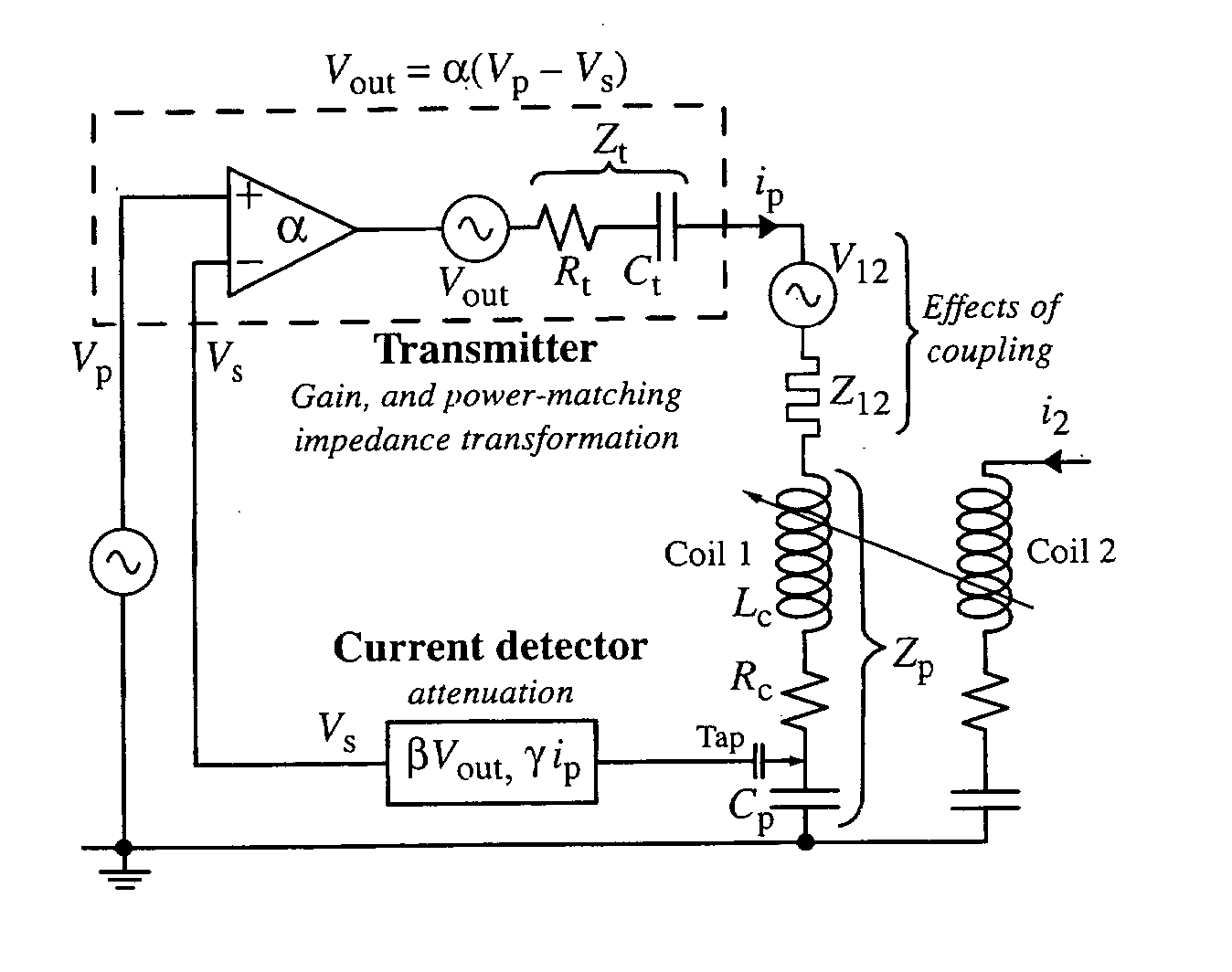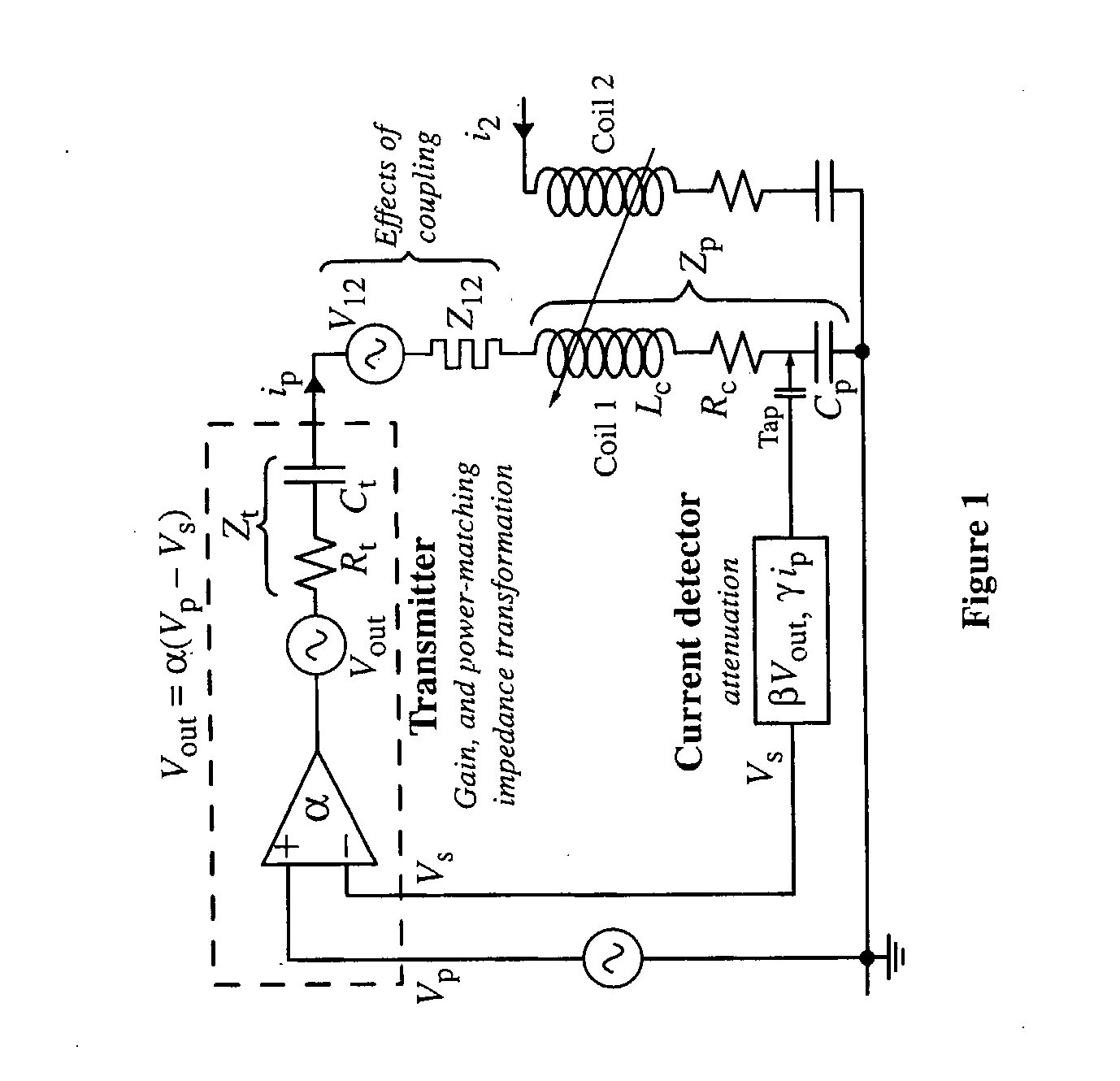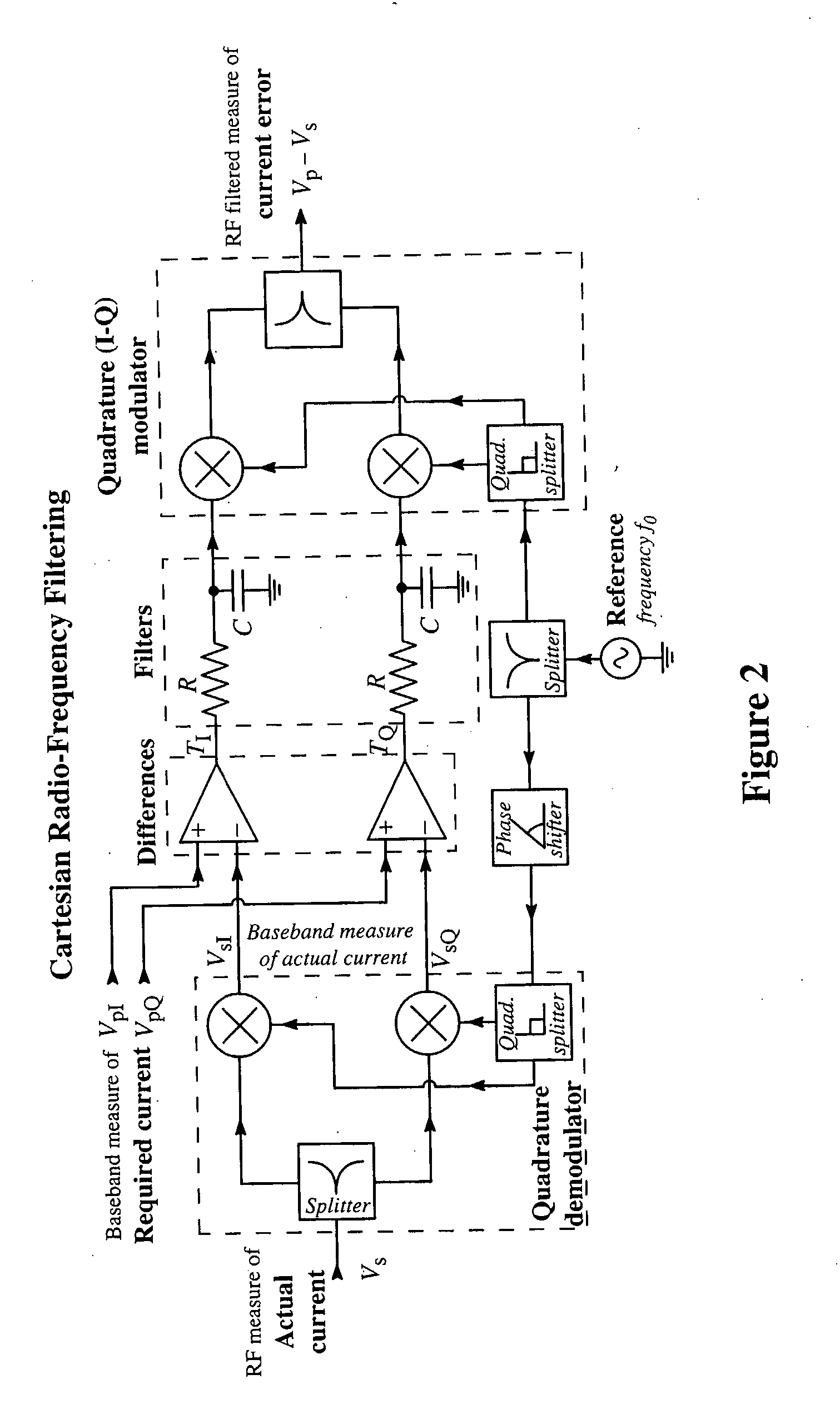Method of Effecting Nuclear Magnetic Resonance Experiments Using Cartesian Feedback
a technology of nuclear magnetic resonance and feedback, applied in the direction of instruments, magnetic measurements, measurement devices, etc., can solve the problems of loss of efficiency that would be required to produce an adequate decoupling, many defects in magnetic resonance instrumentation, and inability to achieve adequate decoupling, so as to improve the control of the experiment
- Summary
- Abstract
- Description
- Claims
- Application Information
AI Technical Summary
Benefits of technology
Problems solved by technology
Method used
Image
Examples
Embodiment Construction
1. Coils During Transmission
[0081] Summary: During transmission, the radio-frequency (RF) current in a magnetic resonance (MR) coil that is solitary or one constituent of an assembly comprising a plurality of such coils is monitored and compared in amplitude and phase with that desired—e.g. the current that would be present in the absence of interactions with the remaining coils, the sample or patient, and of other arbitrary deleterious influences in the environment. Any error is corrected by the mechanism of negative feedback, the bandwidth of the transmitter chain and power amplifier for the said coil being restricted to prevent oscillation.
[0082] Feedback Theory. For illustrative purposes, we shall consider as a general model just two interacting coils, each being connected to its own transmitter. Our goal will be, by feedback round the first coil's transmitter chain, to block in that first coil the erroneous flow of additional current created therein by virtue of power transf...
PUM
 Login to View More
Login to View More Abstract
Description
Claims
Application Information
 Login to View More
Login to View More - R&D
- Intellectual Property
- Life Sciences
- Materials
- Tech Scout
- Unparalleled Data Quality
- Higher Quality Content
- 60% Fewer Hallucinations
Browse by: Latest US Patents, China's latest patents, Technical Efficacy Thesaurus, Application Domain, Technology Topic, Popular Technical Reports.
© 2025 PatSnap. All rights reserved.Legal|Privacy policy|Modern Slavery Act Transparency Statement|Sitemap|About US| Contact US: help@patsnap.com



